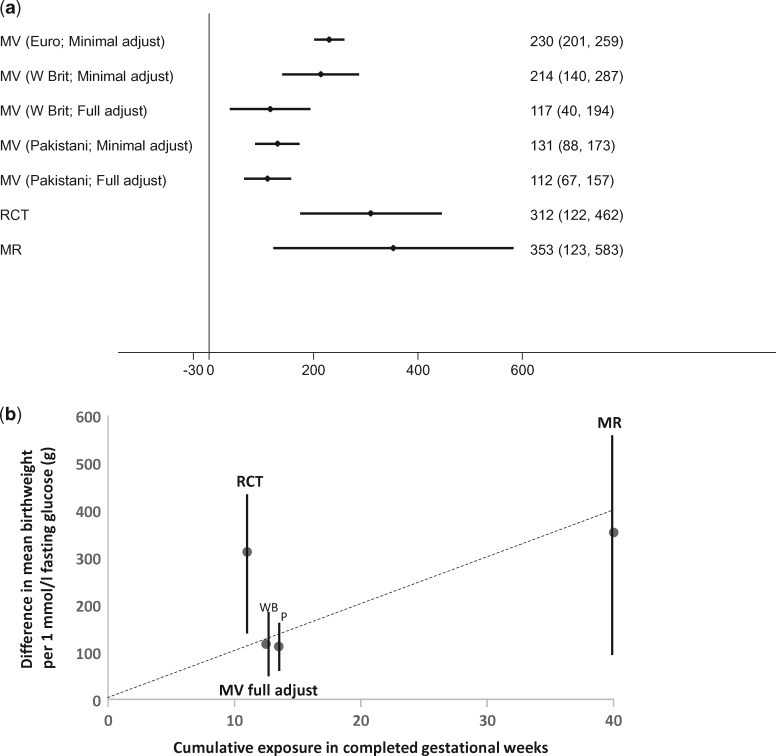Figure 3.
Results for triangulation across different approaches to determine the effect of maternal circulating pregnancy glucose on birthweight. a: Difference in mean birthweight (g) per 1 mmol/l greater fasting glucose. b: Difference in mean birthweight (g) per 1 mmol/l greater fasting glucose against the cumulative number of weeks of exposure (in completed gestational weeks) to 1 mmol/l greater fasting glucose. In (a), the effects are shown of 1 mmol/l maternal gestational fasting glucose on difference in mean birthweight in grams (g) from different approaches. MV, multivariable regression in prospective pregnancy cohorts; Euro, European-origin mother-offspring pairs; W Brit, White British mother-offspring pairs; minimal adjust, adjusted for infant sex and gestational age only; full adjust, fuller adjustment with additional adjustment for maternal age, BMI, parity, education and receipt of income support. In (b), the estimates are shown of the fuller adjusted MV analyses in White British (WB) and Pakistani (P) mother-offspring pairs, together with the IV analyses in the RCT and MR approaches, plotted against estimated length of cumulative exposure to fasting glucose for each approach in completed gestational weeks. The mean length of exposure in the MV of White British and Pakistani pairs is the same (13 weeks), but in order to visualize both they have been separated to 12.5 and 13.5 weeks. The regression line is forced through zero and shows that the RCT result appears to be an outlier (exaggerating the effect of glucose on birthweight).

